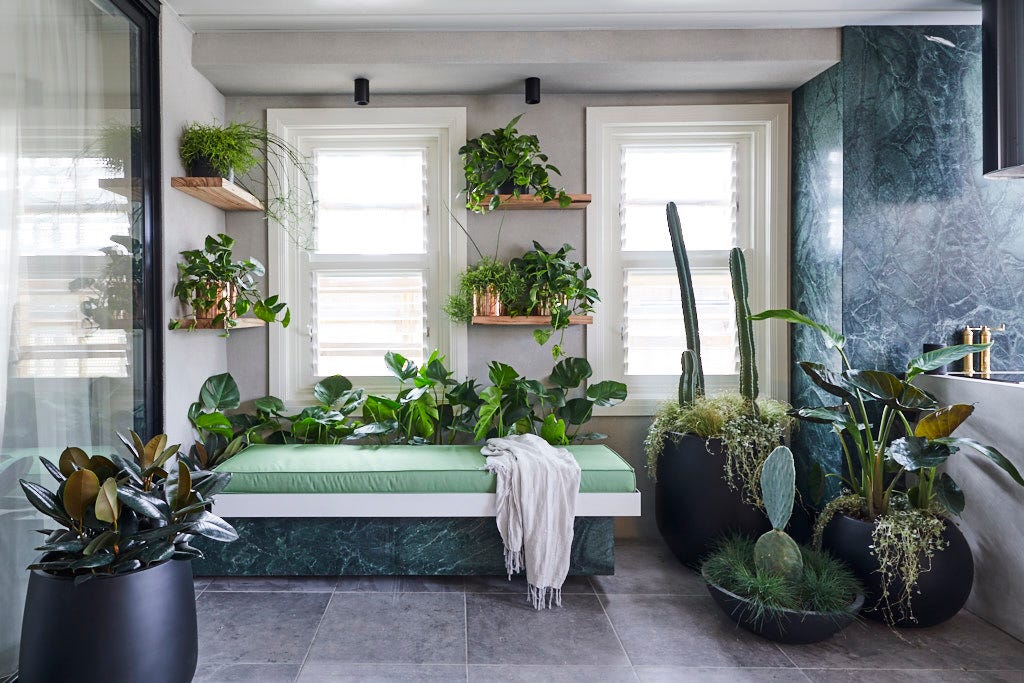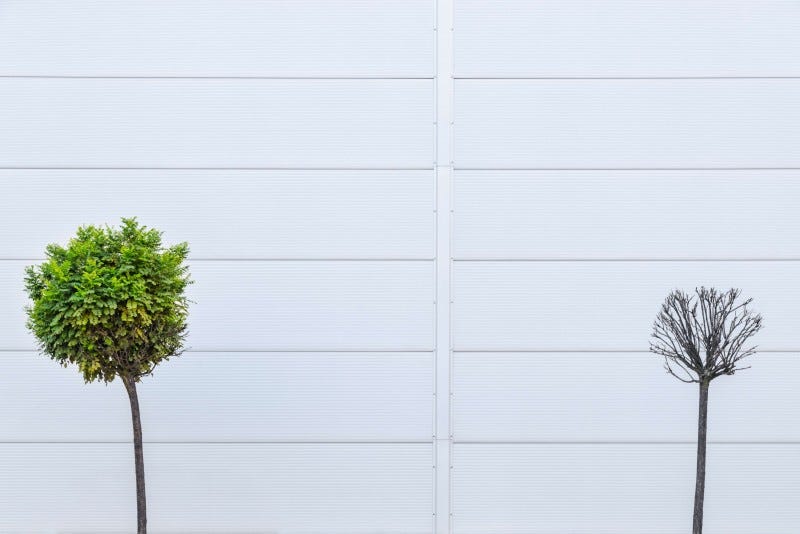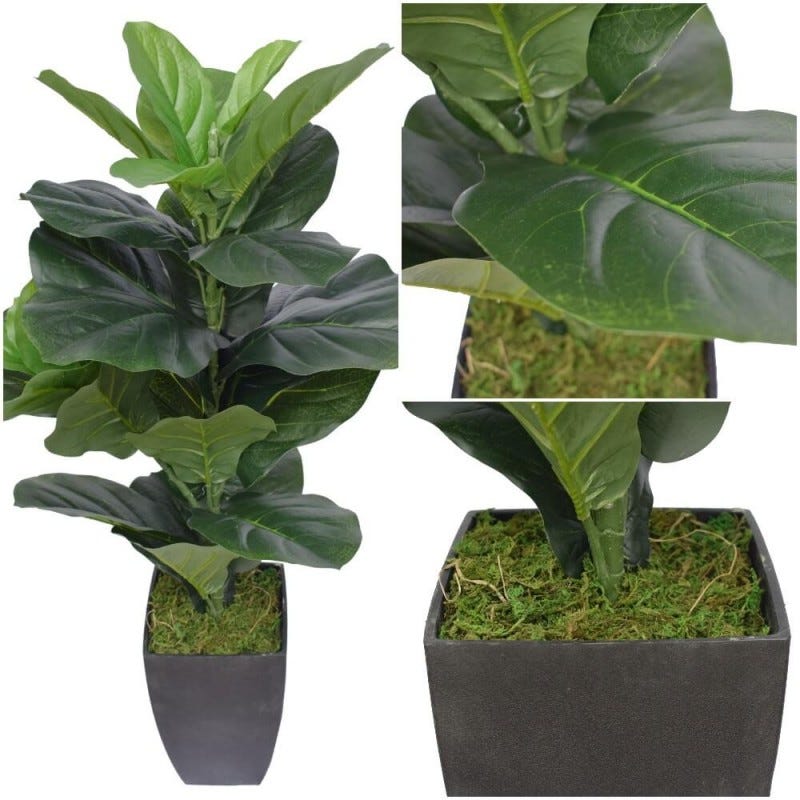Stop killing your plants!
- 26 Feb 2019

We’ve got everything you need to know to keep your indoor - and outdoor - plant babies alive.
Do you have a tendency to kill plants? Yep - us too. And let’s face it - not everyone’s got a green thumb. But follow these simple tips, and you'll be surrounded by green goodness all year round.

Hayden and Sara sure nailed the plant situation on their terrace.
Why are my plants dying?
There can be a variety of reasons why a plant may be struggling, here are some of the most common:
1. Not enough water
The first thing to check is if the plant is getting enough water - if the soil around its base is bone dry, the answer is probably no. Plants need varying amounts of water, and it’s a good idea to check your plant’s requirements. Try watering the soil - don’t drown it - and sprinkle a little on the leaves (most plants also absorb water through their foliage). Let the water totally soak into the ground, and then add more. This allows the level of moisture in the area to return to normal slowly.
2. Too much water
It’s important to get the watering right for your plants - too much water can be just as damaging as not watering enough. When a plant is drooping and unstable, it may be sitting in soggy soil. You can dry it by leaving it in the sun, but make sure this won’t burn the plant. The other alternative is to replant in an area that isn’t as wet.
3. Disease
If you think that your plant has a disease, you’ll need to remove the part that is affected. The difficulty is if the problem is in the roots.
4. Grafting
Another word for transplanting plants is ‘grafting’. The only way that you can save a plant is to remove some of it that is healthy, check that the stem is still green and supple inside, and plant it into a new pot. This is only successful for plants that are able to grow roots from a stem

How to revive a dying plant?
If you have a favourite indoor plant you’d like to revitalise, try these tips:
1. Potbound
When plants grow too big for the pots they’re planted in, their health may start to decline. Plants need room to spread their roots, so try repotting into a larger pot and use healthy soil for added nutrients.
2. Brown foliage
If there are dead leaves or branches on your plant, trim them off to reduce the amount of work your plant needs to do. Another trick is to prune foliage, in general, to help a plant to revive – especially if its roots are damaged.
3. Add some light to the subject
Is your plant in the right light conditions for its variety? One way to tell is if the leaves are small and pale, then it needs more light. If they are brittle or dry with light or dark patches, then it may be in a too sunny position. Move it around to a better place within your home.
4. Hydration
Do you give your plant the right amount of water on a regular basis? Check to see if the soil is dry. What do the leaves look like? Are they brittle or dry? Your plant may be dehydrated. Give it enough water to dampen the soil, then add some water to a shallow bowl and sit the plant in it for around 10 minutes to give it a chance to soak it up.
Sometimes plants suffer from too much water. If this is the case, the roots can be rotting, and mould will start to form. A rule to remember is that plants will always need less water during the colder months, depending on the climate where you live. Check what your plant really needs online, or with your local nursery.
5. Starvation
Give your plant some extra nutrition. Find the best fertiliser for your plant and boost its growth (use according to the instructions on the packaging). An alternative is to research organic solutions that are DIY - just be careful to use a reliable source.
Gift ideas for those with no green thumb
If you just can’t keep your plants alive no matter what you do, try buying low maintenance plants that are almost impossible to kill:
1. Devil’s Ivy
This plant hates soggy soil but loves a well-drained pot or even a vase of water to hang out in. Sunlight is great, but too much direct sunlight and the leaves may burn.
2. Fiddle Leaf Fig
Loves well-lit areas but not in direct sunlight or drafts. They need minimal watering, and their leaves will turn yellow and fall off if they get too much water.

Or try the Artificial Fiddle Leaf Fig variety. How realistic does this look?!
3. Rubber Plant
Keep the leaves moist, but don’t water too much - yellow leaves are a sign of overwatering, and drooping leaves means you need to add water. This is great in a sunny positions, but doesn’t love direct sunlight.
4. Succulent
Succulents are excellent in indirect sunlight and they’ll thrive in around six hours of light every day. If your succulent starts to turn towards the light with more and more space between the foliage, it is not getting enough sun.
5. Mother In Law’s Tongue
This doesn’t need watering every day, and will still be okay if the soil dries out. Important to remember: when you water, make sure the leaves don’t get wet, otherwise they have a tendency to rot. The roots of this plant need lots of room, so repot if it’s getting crowded. It needs occasional sunlight but not all of the time.
Or if you want a plant that won’t need to be replanted, consider the fake mother in law tongue plant.
This blog is reproduced, courtesy of Designer Plants.
Did you like this blog? Subscribe to our newsletter to be the first to receive news from The Block! Subscribe now to receive $20 off your next order.

